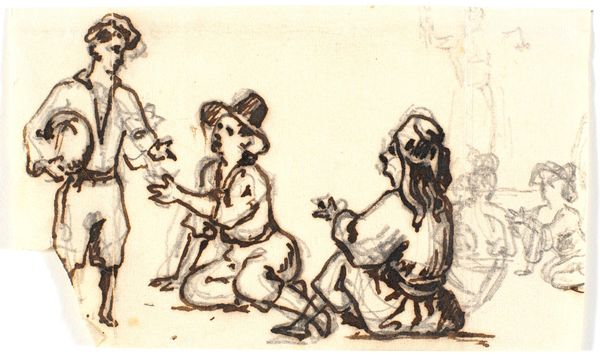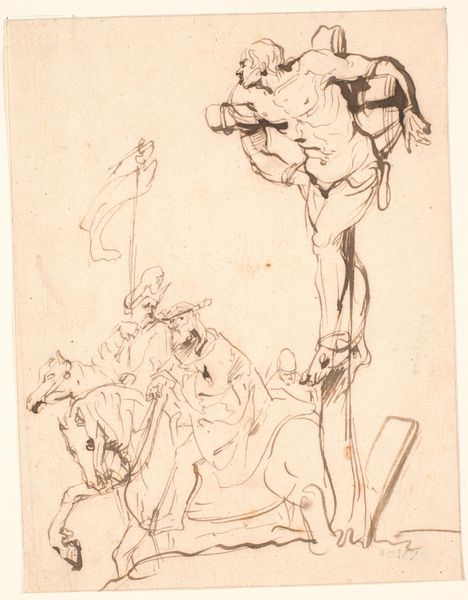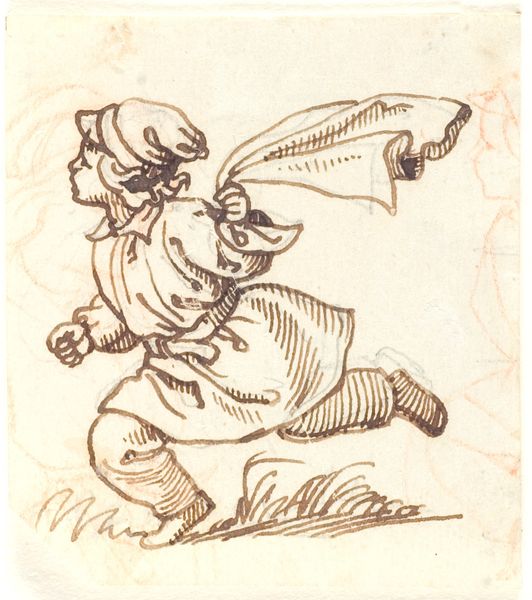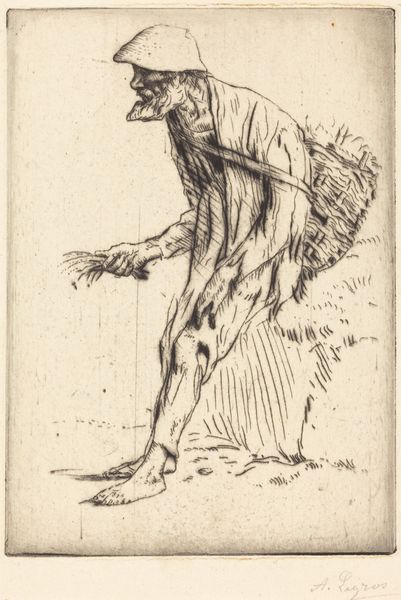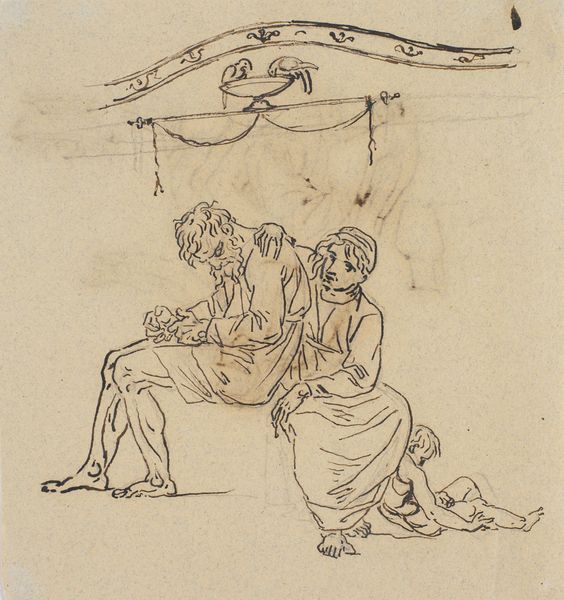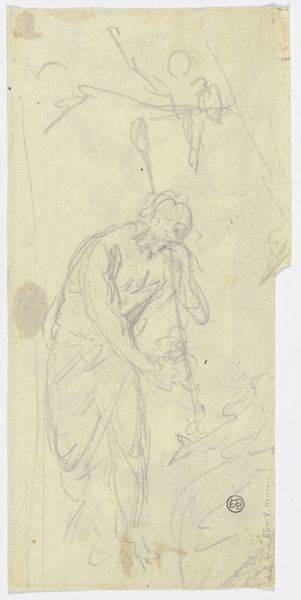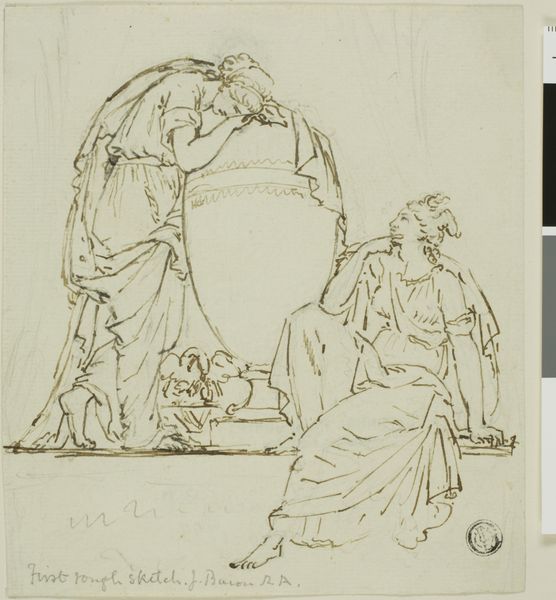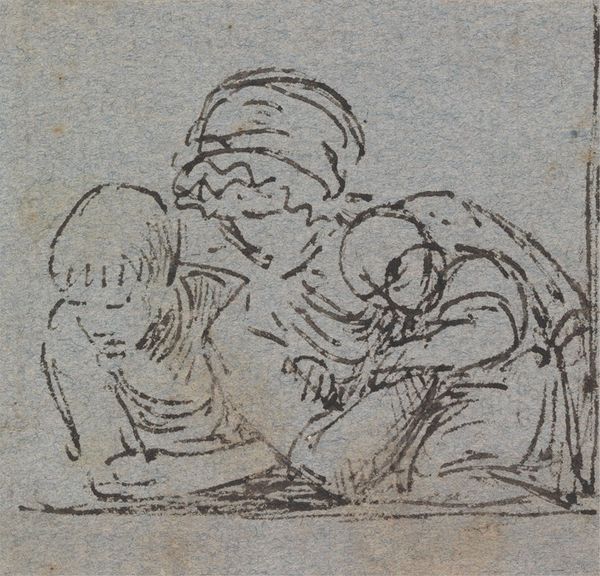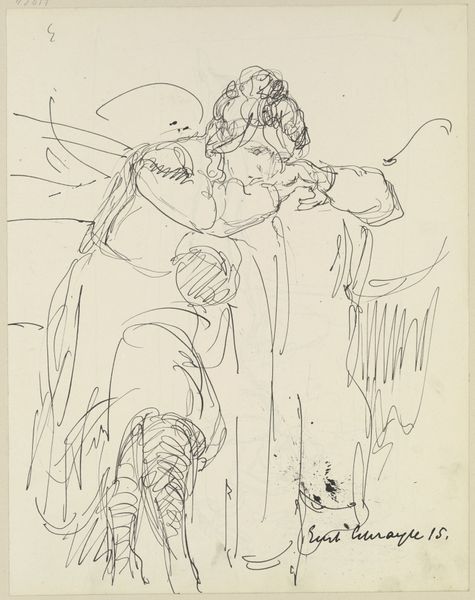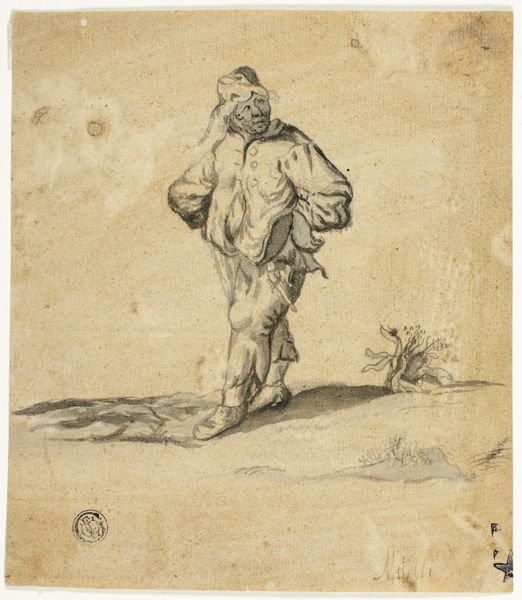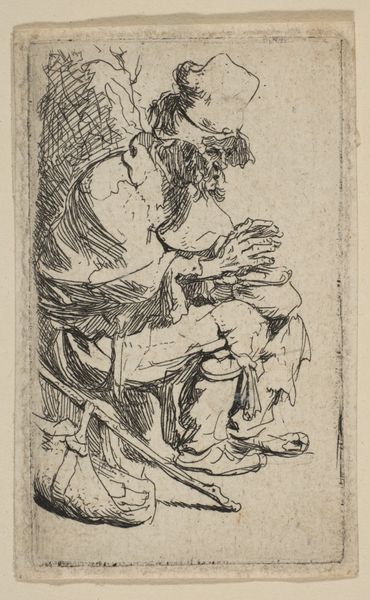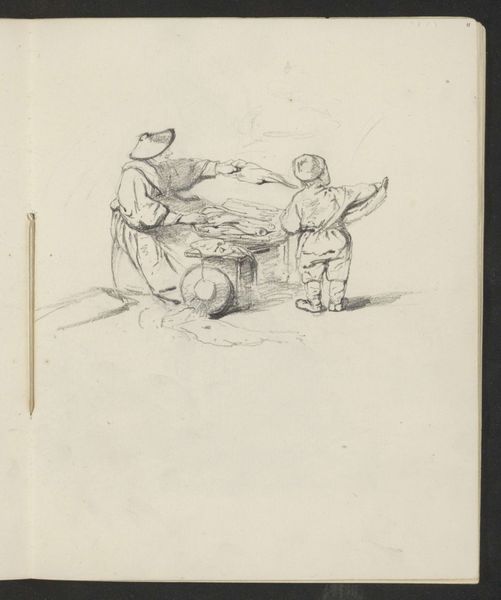
En siddende langskægget olding i profil til venstre med fremrakte hænder. Ved siden en Erosfigur i en oval og en stående nøgen ung mand 1743 - 1809
0:00
0:00
drawing, paper, ink, pencil
#
portrait
#
drawing
#
quirky sketch
#
neoclassicism
#
pen sketch
#
sketch book
#
landscape
#
figuration
#
paper
#
personal sketchbook
#
ink
#
sketchwork
#
ink drawing experimentation
#
pen-ink sketch
#
pencil
#
sketchbook drawing
#
history-painting
#
storyboard and sketchbook work
#
academic-art
#
sketchbook art
Dimensions: 135 mm (height) x 129 mm (width) (bladmaal)
Editor: Here we have Nicolai Abildgaard's drawing, "En siddende langskægget olding i profil til venstre med fremrakte hænder. Ved siden en Erosfigur i en oval og en stående nøgen ung mand," created sometime between 1743 and 1809. It’s rendered in ink, pencil, and possibly other media on paper and is part of the collection at the SMK in Copenhagen. It has the appearance of a sketch for a history painting… what strikes you when you look at it? Curator: The grouping immediately suggests the artistic and intellectual climate of late 18th-century Europe. The juxtaposition of the old, seated figure—possibly representing wisdom or a historical figure—with Eros and the standing nude evokes the revival of classical ideals that defined Neoclassicism. Think of Winckelmann's writings and the fascination with antiquity shaping artistic production. It wasn't just about aesthetic imitation; it was about reclaiming a perceived golden age of civic virtue and philosophical depth. Editor: I see it. So the sketch, then, becomes a political statement? Curator: Perhaps “statement” is too strong, but it certainly engages with the socio-political values being promoted at the time. Academies played a significant role in dictating what constituted 'good' art, often favoring history painting, allegories, and subjects drawn from classical literature, precisely because they could convey moral or political messages. Consider how Abildgaard’s work, and indeed Neoclassicism as a whole, provided visual vocabulary for the emerging nation-states. What kind of statement do you think this piece is making in relation to Academic painting at this time? Editor: Hmmm... maybe a study in contrasts - youth and old age, human and divine... I’m starting to understand the power structures at play a little more clearly now. Thanks! Curator: My pleasure! Seeing how artistic choices intersect with the values and institutions of their time—that’s where art history truly comes alive.
Comments
No comments
Be the first to comment and join the conversation on the ultimate creative platform.
